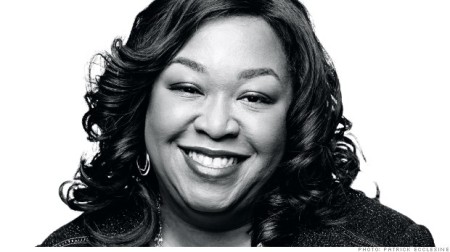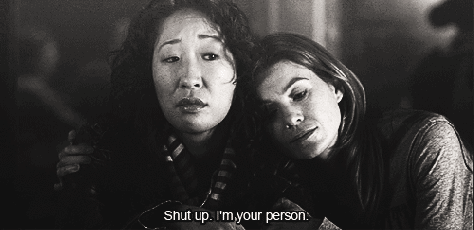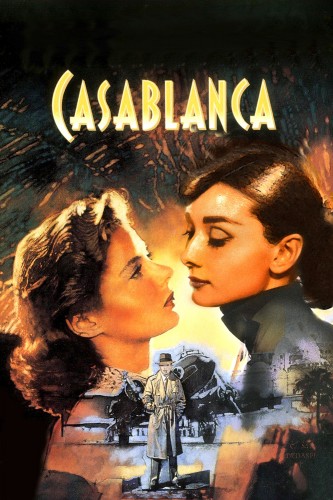This is a guest post by Allie Esslinger.
A lot has been written recently (this week) about Grey’s Anatomy. This is strange, in 2014, because it’s a show that we’ve all stopped watching at least as many times as we’ve begun again. But for all the talk about the lack of diversity, the lack of female characters with volition, and the heyday for feminism happening now on TV, Grey’s stands out as a show that was ahead of its time and as one that has endured. The three top surgeons at the show’s conception were African Americans. Female doctors seem to outnumber male ones and nobody in the world of the show finds that remarkable. But I do.
I am the founder of a film start-up that sits at the intersection of two male-dominated, whitewashed industries. Basically described as a Netflix for Lesbians, Section II acquires and creates lesbian, bisexual, transgender, and questioning (LBTQ) content for our multi-platform network of streaming and VOD channels, which launched last month. We talk about #BetterRepresentation of LBTQ women in popular culture a lot—it’s actually written into our bylaws as a Benefit Corporation.
I remember the early reviews of Grey’s that touted its color-blind casting, its unique brand of post-feminism, and its “Surgery is The Game” competitive mentality. But as I’ve gone back to revisit the early episodes this summer, what’s left me cold is the disconnect I feel watching so many typically marginalized characters operate in a world that itself doesn’t seem to have margins. That said, what Shonda Rhimes has done for improving visibility for minorities and women on television cannot be understated.
It’s a long-play to shape popular culture and consciousness that we believe in whole-heartedly at Section II, but the reality is that Rhimes was the only African American show runner to anchor a dramatic series on primetime when she was hired, and she still is, 10 seasons later.
The Grey’s Anatomy I know and love(d) is not the textbook after which it takes its name, but we still could learn a lot about the very real struggles of minorities and women rising to the top of their field from a show created by a room full of writers who have done just that. I am certainly not suggesting that every season needs an arc with a superseding minority struggle and/or triumph, but at least show me an episode every once in a while in which Meredith and Christina (friends who actually define their person-hood through each other) both apply for a fellowship/promotion/major award but only one of them wins— because, in reality, only a limited number of women ever win. I need more realism about the underlying competition between female friends and coworkers from a show that so acutely examines their careers. That the signs of social advancement it presents are “a given,” without fanfare or comment, is a bit of a let down.

We believe at Section II that #BetterRepresentation goes beyond a numbers game, beyond visibility. Increasing the volume of strong women and strong female characters in Hollywood is important, but it won’t change the system. It hasn’t changed the fact that the number of women each year who get to be a showrunner, to write and direct feature films, continues to decline, despite overwhelming data advocating for a more economical supply and demand chain. We can only make new space for people when we make a new system, and that’s what we should be doing. That’s what we are doing.
Our name comes from the clause in the Motion Picture Production Code that outlawed homosexuality onscreen until 1968. Our model is based on being an ally to both the producers and consumers of LBTQ content and building an ecosystem that supports the entire production process as well as the people going through it.
Addressing the issues of representation begins in development and that’s why we co-produce projects as well as distribute them. There is a lot of opportunity right now to re-define how people consume content and, as a distribution platform, we are tasked with making it the best possible experience for both content creators and consumers.
Yes, there are a lot of reasons that have led people to turn away from Grey’s Anatomy over time. (Can you still pass the Bechdel Test if a conversation starts out about a heart transplant but winds up being a metaphor for moving on after a breakup?) But it celebrated its 200th episode last fall, and Shonda Rhimes now controls an entire night of ABC’s programming schedule. Those are the official reasons that I decided to go back to the beginning and re-watch the series this summer.
I went back to find the show that I miss, that game-changing series I truly believed in and that I honestly felt was good when I was in college. It’s still there, especially in the first 8 episodes on Hulu+. When I started, I wanted to understand what I’d stopped being a part of off-and-on throughout the years. But what I realized is that in the time since Grey’s Anatomy premiered, I changed, the tone of the show changed, and most importantly, the idea that #BetterRepresentation is for all of us, not just minorities, has changed. A night of Shonda Rhimes on network TV is one example of a system that’s improving. But we have the chance to create others. It’s time, now, for technology and content to merge together and foster creativity as the next step in the fight for equality and the ongoing fight for better representation. The game is changing again– join us.
Allie Esslinger is a Southern transplant living in Brooklyn. She has produced projects across genres and formats and recently founded Section II, a new streaming platform and film fund for LBTQ content. (Think: Netflix for Lesbians.) She studied International Affairs and Creative Writing and loves television, iced coffee, and Alabama football.



